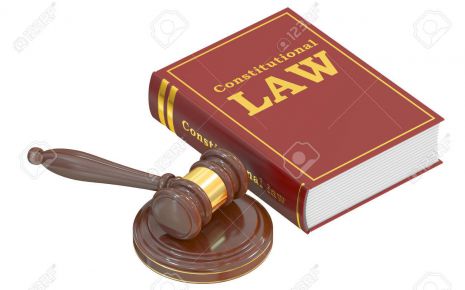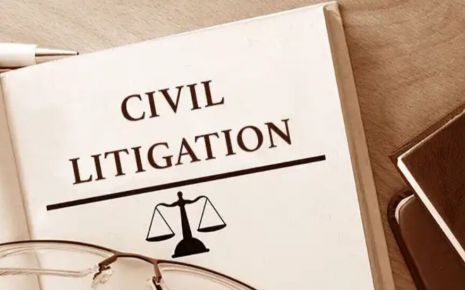The Historical Perspective Of The Contempt Of Courts In India
The Contempt of Court is a matter concerning the fair Administration of Justice,
and aims to punish any act hurting the dignity and authority of Judicial
Tribunals. Although it is difficult to accurately assess the origins of Contempt
Law, there is little doubt that it stems from the Common Law ideal of supremacy
and independence of the Judiciary.
Role of Judiciary and its power regarding Contempt of Court has assumed global
significance.
The experience of two major legal systems, i.e. Common Law and Civil Law, must
be on agenda of discussion for the study of Law of Contempt in common law
traditions. Therefore, to make the law functional for a liberal republican
structural; and attempt has been made to see the law and procedure regarding
Contempt of Court in countries with common and Civil Law Traditions.
History of Contempt of Court in England
The roots of English Law, from which the contemporary contempt doctrine sprouts,
are thin but deep in history. The phrase Contempt of Court (contemptus curiae)
has been in use in English Law for eight centuries. The Law conferred the power
to enforce discipline within its precincts and punish those who fail to comply
with its orders.
The Law relating to Contempt of Court has developed over the centuries as a
means, whereby, the Courts may act to prevent on punish conduct which tends to
obstruct, prejudice or abuse the administration of Justice either in relation to
a particular case or generally. In legal system it is based on common law with
the exception of certain contain statutory modification in England.
The idea of contempt of the King is referred as an offence in the laws set forth
in the first half of the Twelfth Century.
Contempt of the King's Writ was mentioned in the laws of King Henry-I. In the
same laws there was mention or primary pecuniary for Contempt or disregard of
orders. Thus in England before the end of the Twelfth Century Contempt of Court
was a recognized expression and applied to the defaults and wrongful acts of
suitors.
After making a study of cases in the Thirteen Century John Charles Fox concluded
that there was no indication of trial of Contempt out of Court otherwise than in
the ordinary course of the law and many cases of Contempt in Court were tried by
indictment and not by a summary process. If the Contempt is confessed there was
no need for trial by Jury and such cases of Contempt were disposed of by
sentence upon confession.
The earlier form of procedure was attachment by Bill, when trial by Jury was
followed, unless the accused confessed. Later the Star Chamber Practice of
Attachment and Examination without Jury was substituted for the procedure by
Bill. From Fourteenth Century onwards the jurisdiction of the King Justices to
punish Contempt's of a criminal nature summarily was limited to offences net
heinous, committed in Court in the actual view of the Justices. The summary
jurisdiction was held to extend to all Contempt whether committed in or out of
Court.''
It seems, therefore, that the Common Law Courts had the power to deal summarily
with Contempt committed in their presence. From 1402 to 1640 a number of
statutes were passed giving the superior Courts powers to proceed summarily in
certain cases against Officers of the Court, including Juror. Styles Practical
Registrar published in 1657 shows that, certainly, by the middle of the
Seventeenth Century the King's Bench was proceeding summarily against its
Officers.
In the Seventeenth Century, an important development in the law of contempt took
place in the Court of Chancery. The Writ of Attachment began to be used not
merely in the case of those flagrant abuses of the administration of Justice
with which the Common Law Courts were not only to deal, but also to compel
perfonnances as between parties in a particular Suit.
The Writ of Attachment and Summary Process, thereon, became part of the ordinary
procedure of the Court. This development led eventually to the distinction
between Criminal and Civil Contempt. In the Seventeenth and Eighteenth
Centuries, the distinction was not made as clearly as it was in the Nineteenth
Century.
In the Eighteenth Century the Press and the Pamphletees flourished and it was in
that period that Contempt in publishing matter calculated to interfere with due
administration of Justice became clearly established. It developed in three
stages. Firstly, there were examples of persons being published for speaking
disrespectfully of the Court on service of process. Secondly, where matters
scandalizing the Court constituted Contempt, whenever, published. Thirdly, Court
began to punish persons who published matters calculated to prejudice the fair
trial of a pending case.
The power to punish for Contempt of Court was applied originally in England to
Contempt committed in the presence of the Court. In 1747 Thomas Martin, Mayor of
Great Yamouth, sent a banknote fundamental rights Ponds 20 to Lord Hardwicke,
Lord Chancellor, with a letter referring to a proposed Chancery proceeding. Lord
Chancellor ordered Martin to show cause why he should not be committed for
Contempt. He sought pardon and Lord Chancellor in consideration of this, his
Public Office, the payment of costs, and his willingness to the suggestion that
the banknote be sent to the Warden of the Fleet Street Prison for debtors for
their relief, did not take any action.
In 1631, when a Prisoner threw a brickbat at the Judge and narrowed missed him,
the Prisoner's right hand was ordered to be cut off and hung on the gallows. In
1938, when disgruntled litigant threw tomatoes at the Court of Appeal,
consisting of Clawson and Goddard JJ., he was immediately committed to Prison
but released after a few days of incarceration, because, he did not score a
direct hit.
There are several instances of Contempt in the face of Court in English
Tradition and they would not end even if we write a book on it. The development
of Contempt Law in England did contribute great principles to the Law of
Contempt, which are presently followed by several common Law Jurisdictions.
In the year of 1906 the House of Commons passed a resolution that the
jurisdiction of Judges in dealing with Contempt of Court was practically
arbitrary and unlimited and called for the action of Parliament with a view to
its definition and limitation and a similar resolution was passed in 1908. Bills
for the amendment of the Law of Contempt of Court brought forward in the years
1883, 1892, 1894, 1896 and 1908 but none of these met Lord Fitzgerald's protest
with regard to the summary punishment of constructive contempt's.
In 1960 the Administration of Justice Act gave a right of appeal in criminal
cases. After the provision of Administration of Justice Act and believe the
enactment of Contempt of Court Act, 1981 the recommendation of Phillimore
Committee' requires serious attention.
On June 08, 1971 Lord Hailsham L. C. appointed a Committee under the
Chairmanship of Lord Justice Phillimore to consider whether any change was
required in the law relating to Contempt of Court? The Committee submitted its
report in December, 1974. There were some general conclusions and
recommendations. The bill finally received the Royal Assent on July 27, 1981 and
become law on August 27, 1981.
The Law of Contempt has, in the words of the Committee on Contempt of Court
which reported in December, 1974 'developed over the centuries as a means,
whereby, the Court may act to prevent or punish conduct which tends to obstruct,
prejudice or abuse the Administration of Justice earlier in relation to a
particular case on generally'.
Its uncertainties, anomalies and unique procedural features have been
demonstrated on many occasion, and the appointment of a Committee to investigate
the entire Law of Contempt was long overdue.
The terms of reference of the Committee which was eventually set up in 1971
chaired initially by Phillimore L. J. and latterly by Lord Cameron were taken to
include Civil Contempt, as well a Criminal Contempt, and one of the principal
recommendations made in the report is that the distinction between Civil and
Criminal Contempt should be abolished.
In the late 1960's one of the most bitter points of contention between
Journalists and the law arose over the question as to Whether or not-and if so,
when newspapers committed a Contempt of Court by publishing material disclosing
the commission of criminal offence, if the material was potentially prejudicial
to the fairness of a subsequent Criminal trial The Journalist was at risk
when criminal proceedings were pending or imminent, hopelessly imprecise
time indicators as far as the Journalist was concerned.
Furthermore, the law imposed liability without proof of mens rea, the offence
was one of the strict liabilities. Part of the purpose of the Contempt of Court
Act, 1981 was to clarify all of this, which it did by saying in Section 2 (3)
that the strict liability rule was to apply only when the proceedings were
active.
European Court of Human Rights decided that the United Kingdom's Contempt law
was not in compliance with the free speech principles enshrined in Article 10 of
the European convention (Sunday Times Vs V. K), it let loose a chain of
events where implications are still only gradually becoming apparent.
Whilst emphasizing that it is not its function to pronounce itself on an
interpretation of English Law adopted in the House of Lords, the Court points
out that it has to take a different approach. The Court is faced not with a
choice between two conflicting principles, but with a principle of freedom of
expression that is subject to a number of exceptions which must be interpreted.
In general, the 1981 Act goes a long way towards bringing the United Kingdom law
in tune with the European convention on Human Rights. In interpreting the Act,
the Court may consider the provisions of the convention to avert any breach of
its items. The Act is, undoubtedly a liberalizing measure in important respects.
However, it also leaves untouched several areas of uncertainty in the Law of
Contempt. Moreover, it should be remembered that liberalizing the letter of the
law does not necessarily involve the liberalization of the practice of the law.
The attitudes of those who bring contempt proceedings and those who adjudicate
upon them are crucial.''
History of Contempt of Court in India
History of Contempt of Court in India, the roots of Contempt Law in India can be
traced back to the pre-independence period. The East India Company took over the
territories in India, which required the King of England to issue the Charter of
1726 that provided for the establishment of a Corporation in each Presidency
Town.
This Charter is considered to be an important landmark in the history of legal
system in India as it introduced the English Laws in the country. Mayor Courts
were constituted in each of the Presidency Towns and were made the Courts of
Record, and authorised to decide all civil cases within the respective town and
subordinate areas.
Subsequently, in the year 1774, the Mayor's Court at Calcutta was replaced by
the Supreme Court of Judicature at Fort William, Calcutta, under the Regulating
Act, 1773.
The Mayor's Courts at Madras & Bombay were superseded by the Recorder's Courts,
which were also later abolished and replaced by the Supreme Courts under the
Government of India Act, 1800.
While the Supreme Court at Madras came into existence in the year 1801 by the
Charter of 1800, the Supreme Court at Bombay came into existence in 1824 by the
Charter of 1823. The Recorder's Courts & Supreme Courts had the same powers in
the matters of punishing for contempt as was exercised by the superior Courts in
England.
The Supreme Courts were in turn succeeded by the High Courts' under the Indian
High Courts Act of 1861. The three High Courts of Calcutta, Bombay & Madras had
the inherent power to punish for Contempt.
In 1866, the High Court of Allahabad was established under the Indian High
Courts Act, 1861 and was constituted as a Court of record with the power to
punish for Contempt.
In 1867, Peacock C. J. laid down the Rule regarding the power to punish for
Contempt quite broadly In Re : Abdool and Mahtab, (supra) in the
following words:
There can be no doubt that every Court of Record has the power of summarily
punishing for Contempt.
In [Legal Remembrance Vs. Matilal Ghose & Ors., (1914) I.L.R. 41 Cal.
173], the Court observed that the power to punish for Contempt was arbitrary,
unlimited and uncontrolled, and therefore, should be exercised with the
greatest caution: that this power merits this description will be realised when
it is understood that there is no limit to the imprisonment that may be
inflicted or the fine that may be imposed save the Court's unfettered
discretion, and that the subject is protected by no right of general appeal.
The Division Bench of the Calcutta High Court considered this jurisdiction of
the High Court in 1879 in ['Martin Vs. Lawrence', (1879) ILR 4 Cal 655]
and observed:
The jurisdiction of the Court, under which this process (is) issued is a
jurisdiction that it has inherited from the Old Supreme Court, and was conferred
upon that Court by the Charters of the Crown, which invested it with all the
process and authority of the then Court of King's Bench and of the High Court of
Chancery in Great Britain.
Prior to the coming into force of the Contempt of Courts Act, 1926 there was a
conflict of opinion among the different High Courts as to their power to punish
for Contempt of Subordinate Courts. Madras & Bombay High Courts expressed the
view that the High Courts have jurisdiction to deal with contempt of the
Mofussil Courts. But the Calcutta High Court expressed the view that the High
Courts in India did not possess identical power in matters of Contempt of their
Subordinate Courts as possessed by the Court of King's Bench in England.
In [Sukhdev Singh Sodhi Vs. The Chief Justice S. Teja Singh & Judges of The
Pepsu High Court, 1954 AIR 186, 1954 SCR 454], the aspect of Contempt of
Court was broadly discussed-
It is true the same learned Judges sitting in the Privy Council in 1883
traced the origin of the power in the case of the Calcutta, Bombay and Madras
High Courts to the common law of England,….. but it is evident from other
decisions of the Judicial Committee that the jurisdiction is broader based than
that. But however that may be, Sir Barnes Peacock made it clear that the words
any other law in section 5 of the Criminal Procedure Code do not cover contempt
of a kind punishable summarily by the three Chartered High Courts….
Apparently,
because of this the Privy Council held in 1853 that the Recorder's Court at Sierre
Leone also had jurisdiction to punish for Contempt, not because that Court had
inherited the jurisdiction of the English Courts but because it was a Court of
Record…. The High Court of Allahabad was established in 1866 under the High
Court's Act of 1861 and was thus constituted a Court of record…. The Lahore High
Court was established by Letter Patent in 1919 and was duly constituted a Court
of Record.
The Contempt of Court Act, 1926 (hereinafter referred to as the Act 1926) was
the first statute in India with relation to Law of Contempt. Section 2 of this
Act recognized the existing jurisdiction in all the High Courts to punish for
Contempt of themselves and conferred on the High Court's the power to punish for
Contempt of Courts subordinate to it. The Act also specified the upper limit of
the punishment that can be imposed for the said Contempts.
In 1927, a Five Judge Bench of the Lahore High Court re-examined the aforesaid
position in the matter of Muslim Outlook, Lahore and affirmed its earlier
decision in the case of ['The Crown Vs. Sayyad Habib', Indian Law
Reports; Lahore (1925) Volume 6] observing that the Contempt jurisdiction was
inherent in every High Court and not only in the three Chartered High Courts.
The Act 1926 was later amended in 1937 to clarify that the limits of punishment
provided in the Act related not only to Contempt of subordinate Courts but of
all Courts.
It is to be noted that while the Act 1926 was applicable to the whole of British
India, the Princely States of Hyderabad, Madhya Bharat, Mysore, Rajasthan,
Travancore-Cochin, Saurashtra & Pepsu had their own corresponding State
enactments on Contempt.
In 1948, the Pepsu High Court was established by an Ordinance, Section 33 of
which provided that it would be a Court of Record and would have power to punish
for Contempt.
The Act of 1926 along with the aforementioned State enactments were repealed and
replaced by the Contempt of Courts Act, 1952 (hereinafter referred to as the
Act 1952), which made significant departures from the earlier Act.
Firstly, the expression High Court was defined to include the Courts of
Judicial Commissioner, which were not so included in the purview of the Act
1926; and secondly, the High Courts, which now included the Courts of Judicial
Commissioner, were conferred jurisdiction to inquire into and try any Contempt
of itself or that of any Court subordinate to it. This was irrespective of as to
whether the Contempt was alleged to have been committed within or outside the
local limits of its jurisdiction, and irrespective of whether the alleged
contemnor was within or outside such limits.
Under the aforesaid legislation the Chief Courts were also vested with the power
to try and punish for any Contempt of itself. The legislation itself prescribed
the nature, type, as well as the extent of punishment that could be imposed by
the High Courts and the Chief Courts.
On April 01, 1960, a Bill was introduced in the Lok Sabha to consolidate and
amend the law relating to Contempt of Court. Observing the law on the subject to
be uncertain, undefined and unsatisfactory, and in the light of the
constitutional changes in the country, the Government, to scrutinise the law on
the subject and to further study the said Bill, appointed a Special Committee in
1961, under the Chairmanship of Shri H. N. Sanyal, the then Additional Solicitor
General of India.
The Sanyal Committee examined the law relating to Contempt of Courts in general,
and the law relating to the procedure for Contempt proceedings including the
punishment thereof in particular. The Committee submitted its report in 1963,
which inter alia defined and limited the powers of certain Courts in punishing
for Contempt of Courts and provided to regulate the procedure in relation
thereto. It is to be noted that the Committee in its report made specific
mention of Criminal Contempt, recommending specifically the procedure (to be
followed) in cases of Criminal Contempt.
The recommendations of the Committee were generally accepted by the Government
after having wide consultation with the State Governments, Union Territory
Administrations, and all other stakeholders.
The aforesaid Bill was also examined by the Joint Select Committee of the Houses
of Parliament, which also suggested few changes in the said Bill; one of which
was in respect of the period of limitation for initiating Contempt proceedings.
After the aforesaid deliberations the Contempt of Courts Act, 1971 (70 of 1971)
came to be enacted (hereinafter referred to as the Act 1971), which repealed
and replaced the Act 1952. The said Act 1971 inter alia categorises Contempt
under two heads i.e. Civil Contempt and Criminal Contempt,
providing thereunder specific definitions for both (Section 2). It also carved
out a few exceptions, prescribing guidelines for reporting and commenting on
Judicial proceedings that would not attract the provisions of the Act.
For example, fair and accurate report of a Judicial proceeding (Section
4) and fair comment on the merits of any case which has been heard and
finally decided (Section 5) would not give rise to the proceedings under
the Act.
The Act also categorically provided that an alleged act would not be punishable
thereunder unless it substantially interferes or tends substantially to
interfere with the due course of Justice (Section 13). The Act also
provides for the period of limitation for initiating the contempt proceedings
(Section 20).
It can be observed from a scrutiny that since the enactment of the Act 1926 and
subsequently with that of the Acts of 1952 and 1971, the power of the Court to
impose punishment for Contempt of the Court ceased to be uncontrolled or
unlimited.
Conclusion
Modern law, is a culmination of a long journey from divine law to natural law
and further positive law, and has retained some of the principles and beliefs
enshrined in early legal thought. Although modern law is thought to be rational
and free from superstition and myth, we see that it often clings on to archaic
conceptions of the Court, often misplaced in today's context. The Law of
Contempt is an excellent example of this dichotomy between rationality and
mythology surrounding the Judiciary.
The concept originated in English medieval monarchies as a way to preserve the
unchallengeable authority of the King, who was believed to be the fountainhead
of Justice. The authority of God as the last word was believed to be manifested
in him, the human sovereign.
We, the People of India made the Constitution of India and the sovereign
Republic of India, and all power exercised by the three instrumentalities of
State function under the Constitution. Its Preamble speaks Justice - social,
economic and political - as a fundamental privilege of the people. Social
Justice and equality before law are of more value to the common masses, while
the higher classes are often allergic to the under-privileged and the have-nots.
The Contempt of Courts Act, 1971 is one of the most powerful statutes in the
country. It gives the constitutional Courts wide powers to restrict an
individual's fundamental right to personal liberty for scandalising the
Court or for wilful disobedience of any Judgment, Writ, Direction or
Order.
Written By: Dinesh Singh Chauhan, Advocate, J&K High Court of Judicature, Jammu.
Email: [email protected], [email protected]
Law Article in India
Legal Question & Answers
Lawyers in India - Search By City
LawArticles
How To File For Mutual Divorce In Delhi

How To File For Mutual Divorce In Delhi Mutual Consent Divorce is the Simplest Way to Obtain a D...
Increased Age For Girls Marriage

It is hoped that the Prohibition of Child Marriage (Amendment) Bill, 2021, which intends to inc...
Facade of Social Media

One may very easily get absorbed in the lives of others as one scrolls through a Facebook news ...
Section 482 CrPc - Quashing Of FIR: Guid...

The Inherent power under Section 482 in The Code Of Criminal Procedure, 1973 (37th Chapter of t...
The Uniform Civil Code (UCC) in India: A...

The Uniform Civil Code (UCC) is a concept that proposes the unification of personal laws across...
Role Of Artificial Intelligence In Legal...

Artificial intelligence (AI) is revolutionizing various sectors of the economy, and the legal i...








Please Drop Your Comments